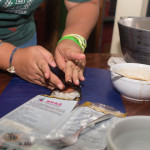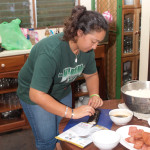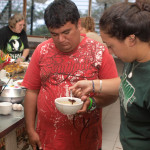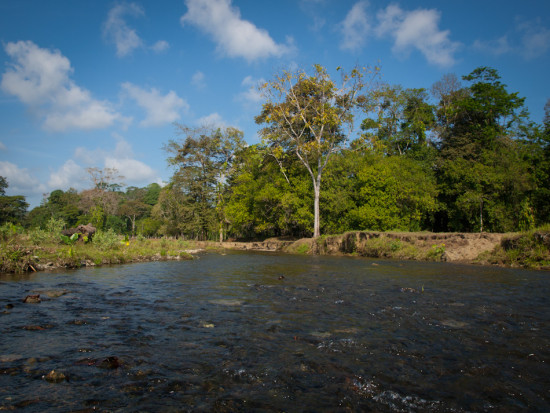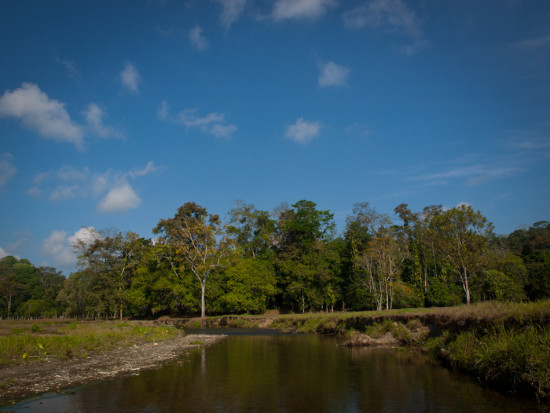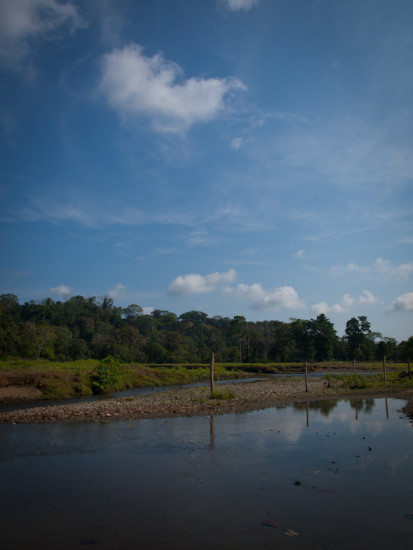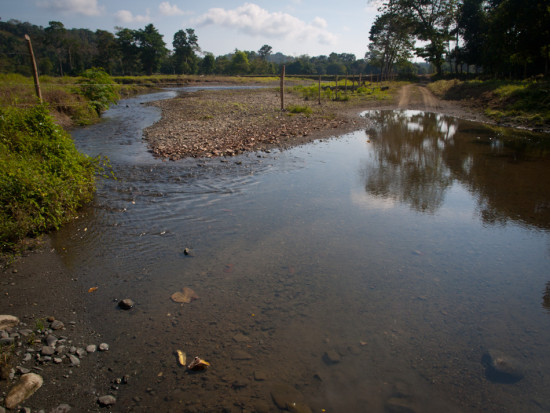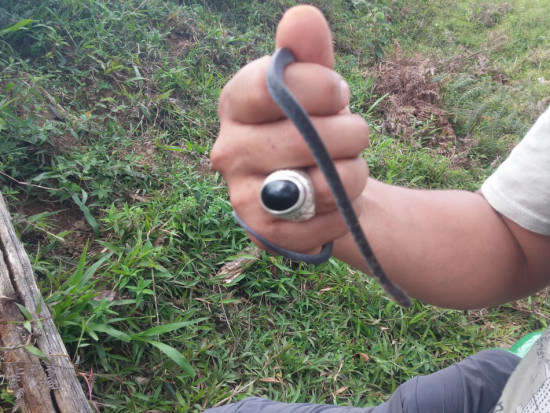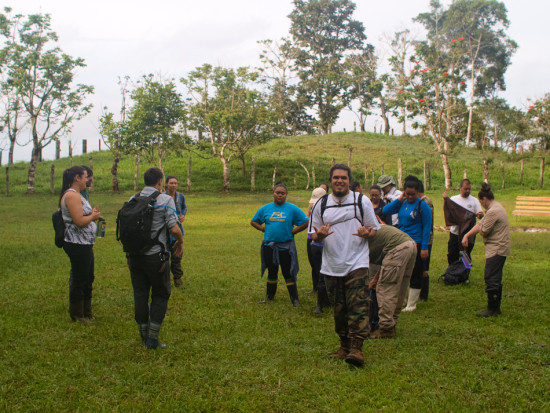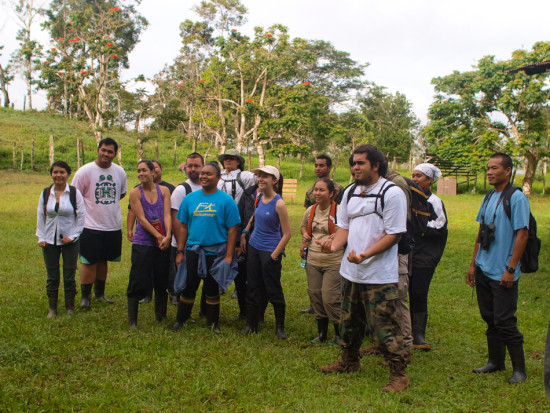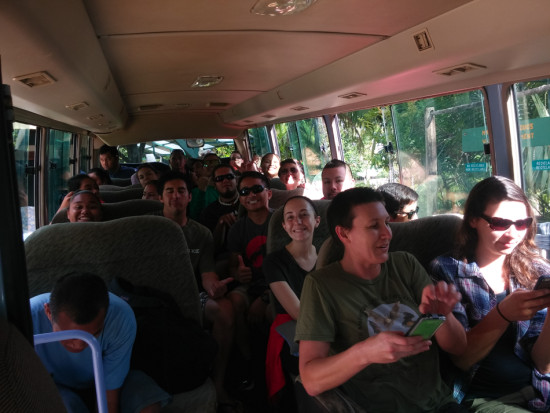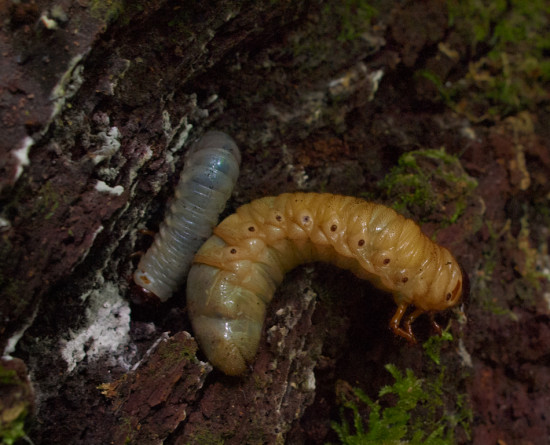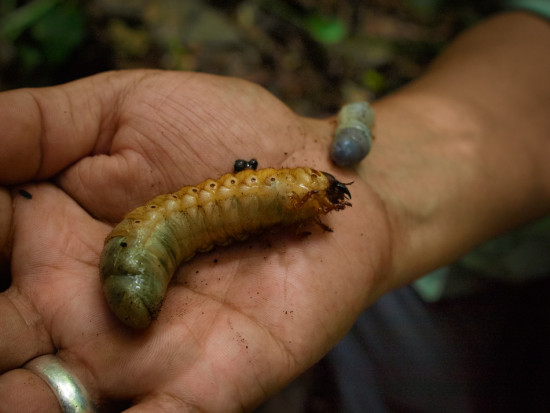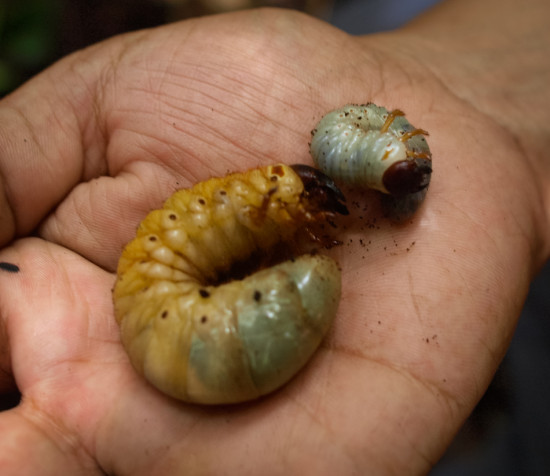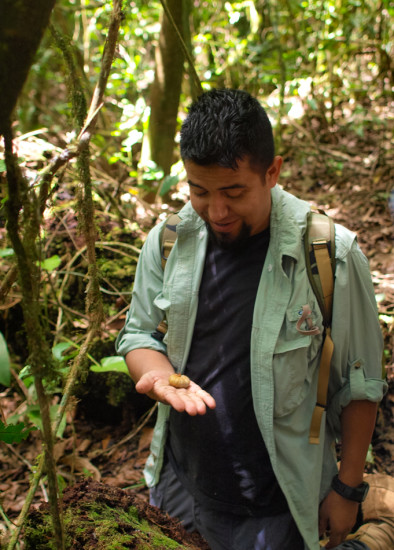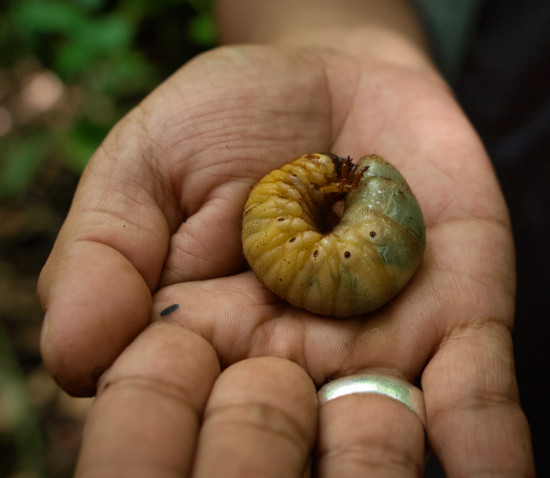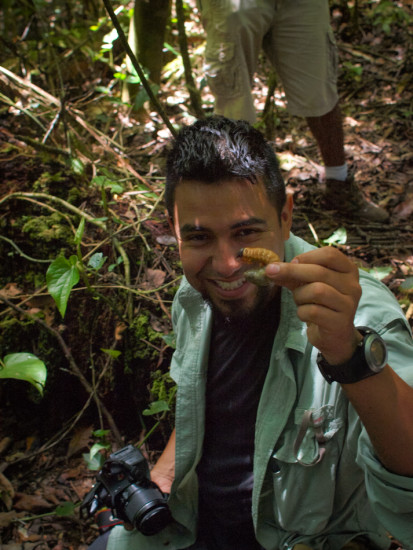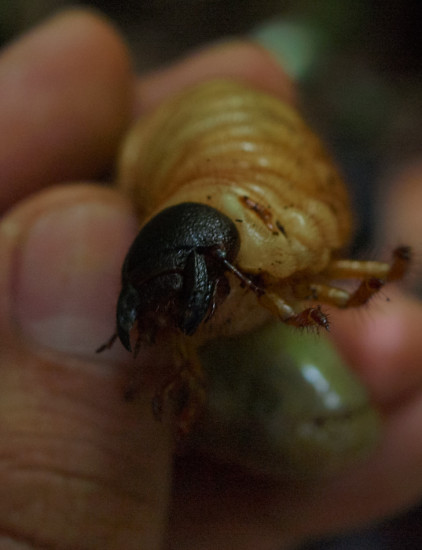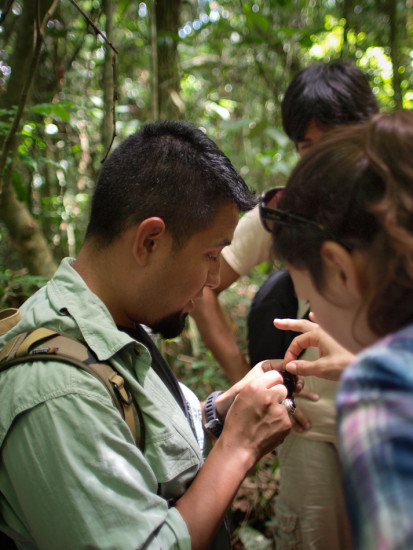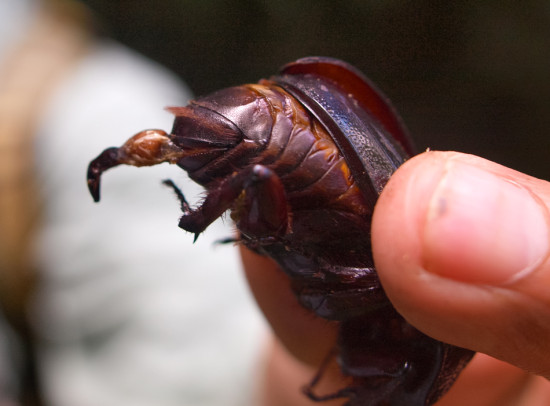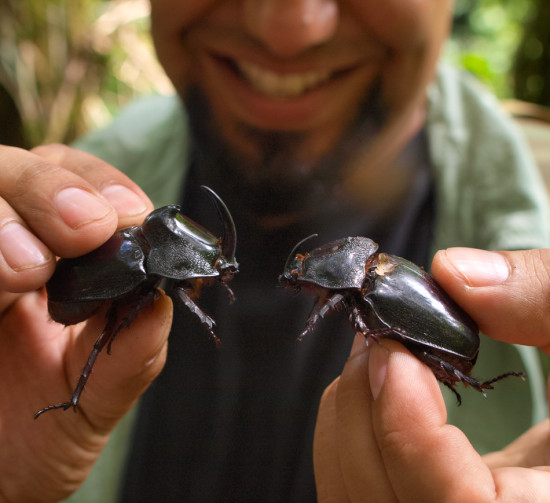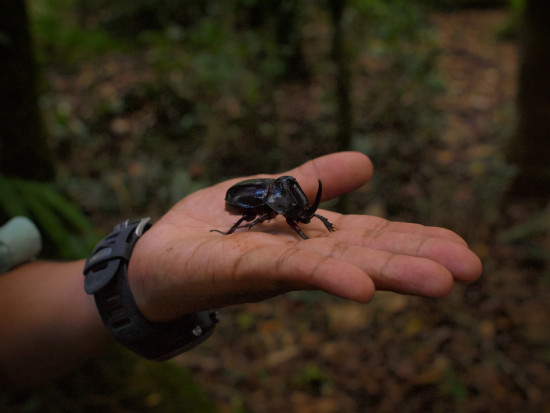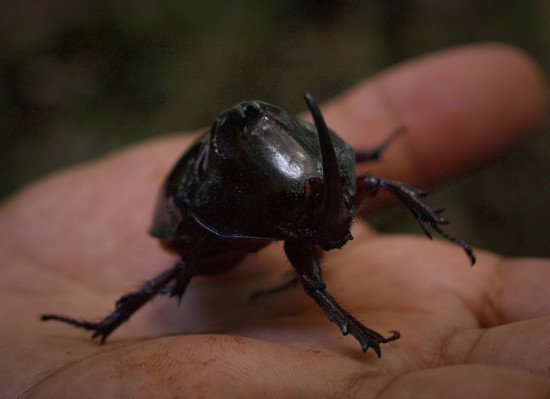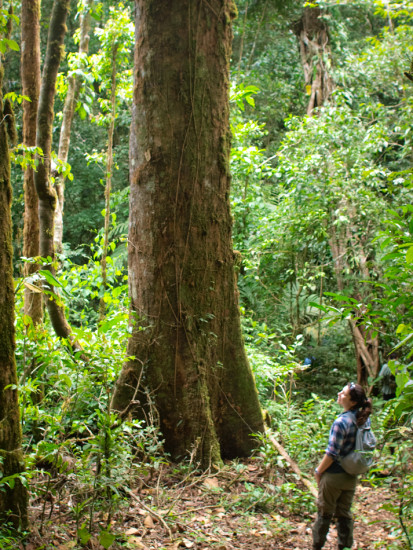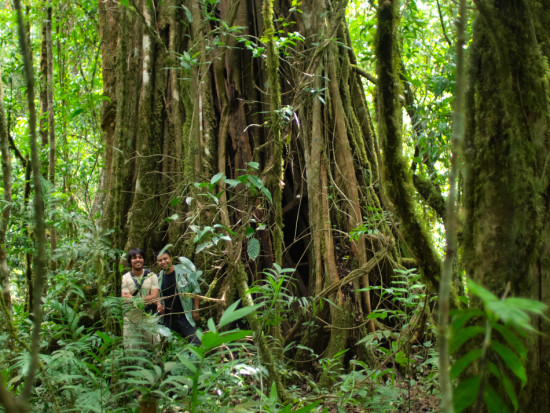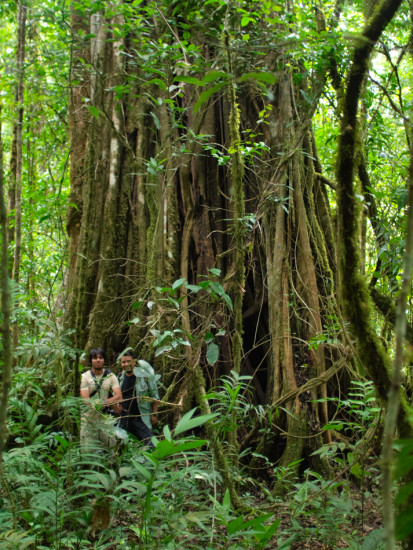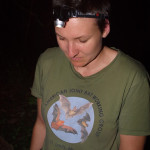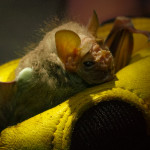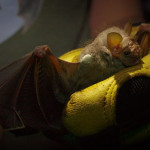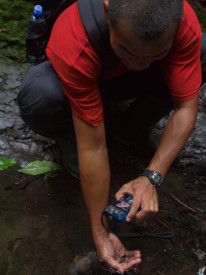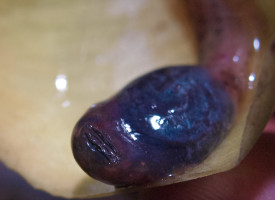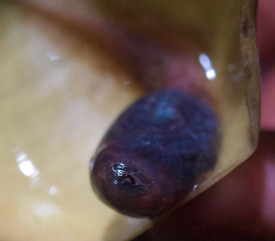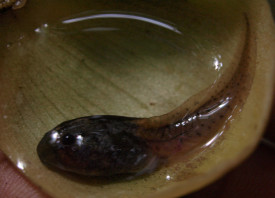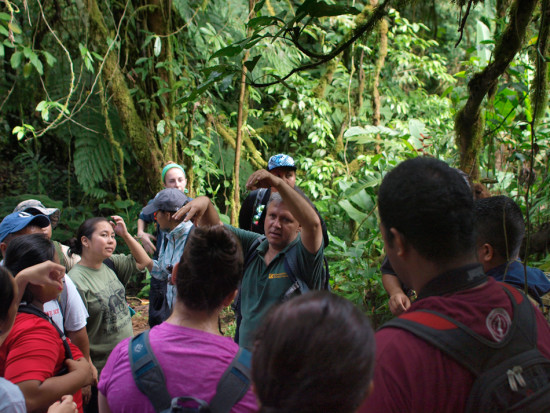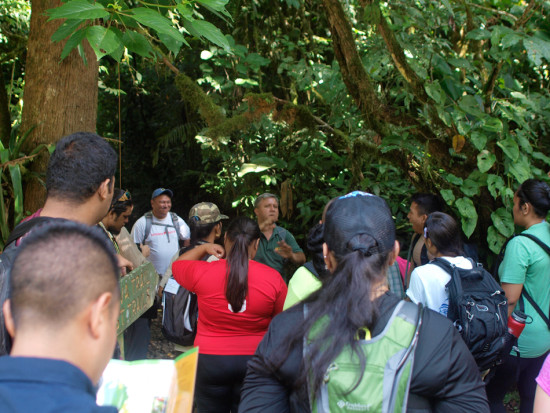A juvenile vesper rat Nyctomys sumichrasti. We have trapped two of these mice in the house we’re staying in, although the one below was trapped in 2013. They seem to like bananas… and Cristian, another research mentor, doesn’t particularly like the mice…
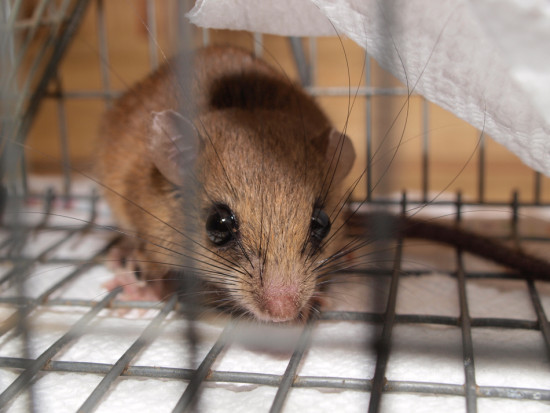
Tag Archives: People
NAPIRE led mealtime
One of the dinners in 2013’s NAPIRE program was prepared by some students and staff.
Rio Nuevo
A highly impacted sampling site for Mike Monfredi’s work on Osa fishes back in 2010.
Report of snakes
Below is a working list of snakes I’ve found and identified (with help from various others, including Juan and Cristian) during NAPIRE programs.
| Species | Date | Location |
| Cope’s Coffee snake Ninia psephota | 5 July 2015 | Road leading to Las Alturas |
| Shiny whipsnake Chironius grandisquamis | 16 July 2015 | In the Rio Java at Las Cruces |
| Plain wormsnake Geophis hoffmanni | 10 July 2015 | Drive-way of Wilson Botanical Garden |
| Sock-headed snake Enuliophis slateri | 27 June 2015 | Drive-way of Wilson Botanical Garden |
| Black-banded Cat-eye Snake Leptodeira nigrofasciata | 18 July 2015 | Rio Java Trail near Quebrada Culvert |
| Blunt-headed tree snake Imantodes cenchoa | 18 July 2015 | Rio Java trail near Quebrada Culvert |
| Green Parrot Snake Leptophis ahaetulla | 25 July 2015 | Near researcher cabins |
| Bird snake juvenile Pseustes poecilonotus | 25 July 2015 | Rio Java trail |
| Snail-eating Snake Sibon argus | 6 July 2016 | In bromeliad bed outside of Casa Wilson |
| Blunt-headed tree snake Imantodes cenchoa | 29 June 2016 | Outside of Reception |
| Red-tailed boa Boa constrictor | 8 July 2016 | At entrance to Rio Java trail |
Preparing for Cerro Chai
The NAPIRE group is prepped before the 600 m ascent to the top of Cerro Chair at Las Alturas
Rhinoceros beetle grubs and male adults
Along a thin, elevationally-restricted band on the trails of Las Alturas, dead and dying male rhinoceros beetles lie in the leaf litter. These may be the males of the species posted here,
Some large trees at Las Alturas
Lindsay, Juan, and Cristian enjoy some of the large trees of La Amistad International Biosphere Reserve.
The Wrinkle-faced Bat
One of the ugliest bats on the planet, the wrinkle-faced bat Centurio senex was caught at Las Alturas by Rachel and her students while mist netting at Las Alturas. The face of the bat may help in directing and manipulating sound waves for echolocation. There are also striations on the bats wings, although I’m unsure of their function.
Tadpoles in Quebrada Cerro
A large tadpole from Quebrada Cerro in Las Cruces. This could be a tadpole of the brilliant forest frog (Lithobates warszewitshii), but I haven’t keyed it out.
Tadpoles were abundant in this stream, which drains primary wet forest, whereas they are fairly scarce in other streams in the preserve, possibly because fish didn’t appear to be present in Quebrada Cerro–in most other streams, fish, particularly the guppy, are abundant.
Introducing Las Cruces forest
Rodo, a resident biologist at Las Cruces Biological Station, leads a hike through some of the trails at the station with the NAPIRE students. During the hike, he took students through several habitat types, and explained the origins of the land and its use.







